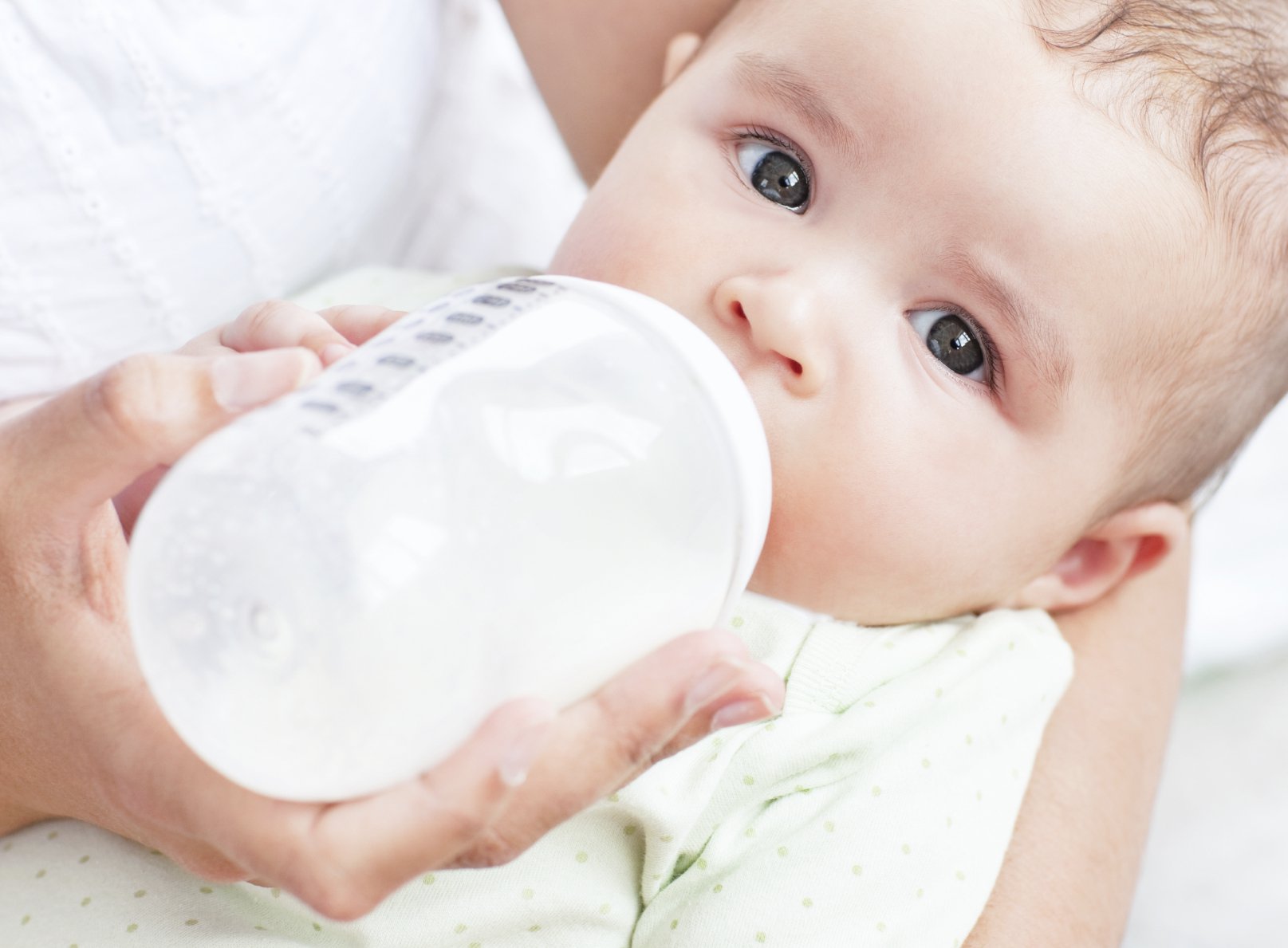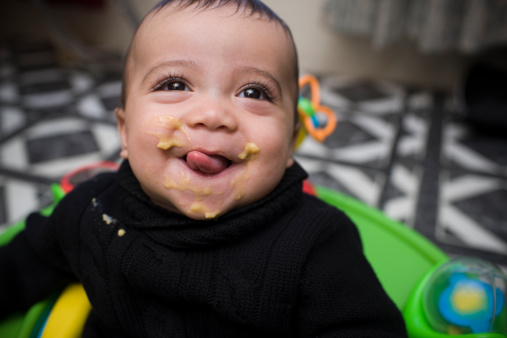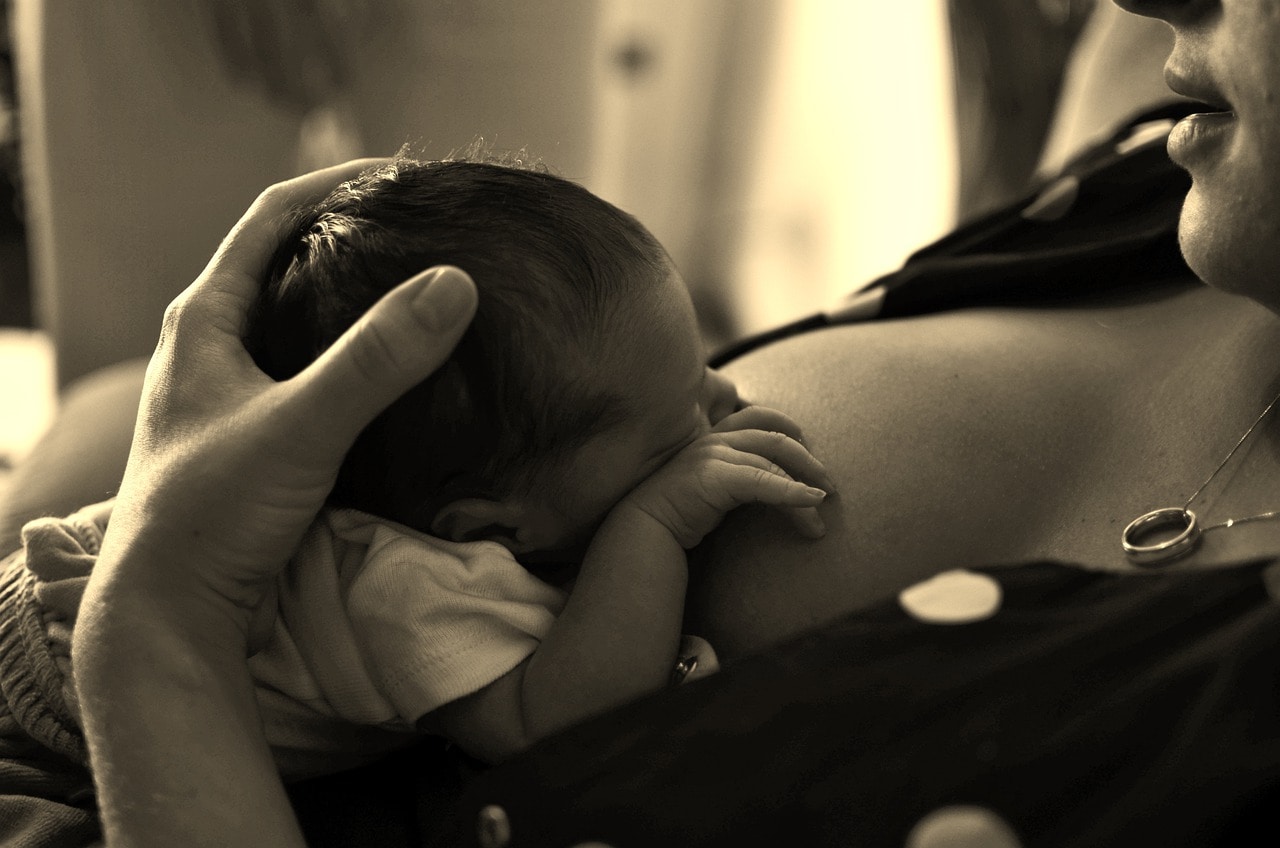Once breastfeeding is going well, your baby can begin drinking your breast milk from a bottle. You should avoid bottle feeding your baby if there are any problems with nursing at your breast because it can confuse your baby and increase the breastfeeding difficulties.
Preparing to introduce the bottle to a breastfed baby
After about four weeks of breastfeeding, begin pumping after one feeding a day where your breasts still feel a little full. The goal is to pump some breast milk “leftovers.” Freeze this first batch immediately and add other leftovers to it after they have cooled in the freezer.
Based on your baby’s weight, you can calculate the total number of ounces your baby takes in each day. If you’re uncertain, ask your pediatrician, doula or lactation consultant to help you calculate.
Once you know baby’s total feeding volume over a 24-hour period, divide that by the typical number of times your baby feeds for a target volume for the first bottle.
Example volume for baby’s first bottle:
-
- If baby takes about 24 ounces a day and feeds between eight and 12 times a day,
- That means he could take anywhere from 2 to 3 ounces.
- Pump until you have a 2-ounce bottle and then have several 1/2 ounce bottles ready in case baby is still hungry.
When you have stored enough to equal a typical feeding plus just a little more, you’re ready to introduce a bottle.
- Thaw out the 2-ounce bottle in the refrigerator overnight.
- When it’s close to feeding time, place the bottle from the refrigerator in a bowl of warm water (bath temperature) or a bottle warmer.
- Often it helps to run the bottle nipple under warm water to make it more acceptable to the baby.
Selecting the bottle and nipples
Many babies prefer drinking from certain bottles and nipples; you may need to try a few brands before you discover your baby’s preference. There are many options for nipple size and shape. The flow rate is determined by the size of the hole at the tip of the nipple; the slower flow bottles have a smaller hole. It is best to start with the slow flow (smallest hole).
How to introduce the bottle
To introduce the bottle it’s best to hold baby in an upright, almost sitting position that is similar to your sitting position. Hold the warmed bottle at an angle tilted just enough to fill the nipple. This tilt allows baby to keep control of when and how fast the milk comes.
The first few times your baby drinks from a bottle, ask your partner or another caregiver to hold your baby to do the feeding. If you are holding your baby, it may trigger the habit to breastfeed and make introducing the bottle more difficult.
When baby is finished, you will pump to create a bottle equal to what the baby consumed. Remember that the baby is always better than a pump! If you do not pump as much as the baby took, it is more likely a pump issue than an issue of not enough milk. Just pump after another breastfeeding and add that amount to what you pumped to get the amount baby took.
Begin introducing the bottle 1-2 weeks before you return to work or school. Your baby will need time to learn this new skill, so do a trial run or rehearsal of the new routine. Plan to leave your baby for 1-2 hours before you go back. Head to the grocery store or gym and leave your baby with the chosen caregiver. You can return early if you need to, but this helps you and your baby prepare for the new routine.
Continue breastfeeding as often as you can, and pump only when needed. Nursing your baby stimulates your body to produce more milk, so putting your baby to the breast keeps your milk supply strong.
Want to Know More?
Compiled from the following References:
Newman, J. (1990). Breastfeeding Problems Associated with the Early Introduction of Bottles and Pacifiers. Journal of Human Lactation, Vol. 6.
Brown, R., (2007). Can Bottle-Feeding Really Mimic Breastfeeding? Journal of Human Lactation Vol 23
Lyford, E., (2011). Bottle-Feeding the Breastfed Baby. Kellymom.com.
La Leche League International.






